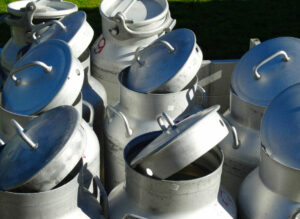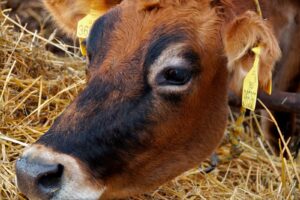Fernando Diaz
Fungal species of Fusarium produce the mycotoxins deoxynivalenol, fumonisins, and zearalenone. The limits established for dairy cattle by the Food and Drug Administration (FDA) in the US for deoxynivalenol and fumonisin are 5 ppm and 30 ppm, respectively. Although the FDA does not suggest safety guidelines for zearalenone, the European Commission established 250 ppb as the maximum legal limit in complete feed for this mycotoxin.
Dairy cattle can better resist the adverse health effects associated with mycotoxin exposure because of their ability to degrade mycotoxins in the rumen. However, rumen metabolites of the parent mycotoxin may be equally or more toxic. Researchers from UCD Lyons Research Farm, Co. Kildare, Ireland, investigated the effect of feeding naturally contaminated corn grain on milk production and blood metabolites of early lactation cows.
During 4 weeks, 28 cows were divided in 2 groups and fed a TMR diet including 21.5% in a dry matter basis (DM) of corn grain with low- (DON 0.76 ppm and ZEA 90 ppb) o high-concentration of Fusarium mycotoxins (DON 9.16 ppm and ZEA 1704 ppb). Mycotoxin concentration in the low- and high-contaminated TMR diet were 0.16 and 1.97 ppm DON in a DM basis, and 19 and 366 ppb ZEA, respectively. Therefore, DON concentration in both diets was below FDA maximum tolerable limits for use in dairy feeds (5 ppm). The low-contaminated diet had lower amounts of ZEA than the European action concentration; however, the high-contaminated TMR overpassed the legal limit for this mycotoxin (250 ppb).
Surprisingly, the authors (McKay et al., 2019) did not observe differences in DM intake and milk yield between diets. On average, cows consumed 20.7 kg DM/day, and produced 37.1, 1.42, and 1.18 kg of milk, milk fat and milk protein per day. Additionally, somatic cell counts were not affected by mycotoxin levels (117 cells/ml).
In conclusion, the level of Fusarium mycotoxin contamination reported in this study did not produce a significant effect in cow performance. Although mycotoxins can be the primary agent causing acute health issues in a dairy herd, they more likely contribute to chronic problems, such as a higher incidence of disease, poor reproductive performance, or suboptimal immunity.
Reference
Z.C. McKay, O. Averkieva, G. Rajauria, K.M. Pierce. 2019. The effect of feedborne Fusarium mycotoxins on dry matter intake, milk production and blood metabolites of early lactation dairy cows. Animal Feed Science and Technology. 253:39 – 44.
© 2019 Dairy Knowledge Center, LLC. All Rights Reserved.
[/ihc-hide-content][/vc_column_text][/vc_column][vc_column width=”1/6″][/vc_column][/vc_row]











